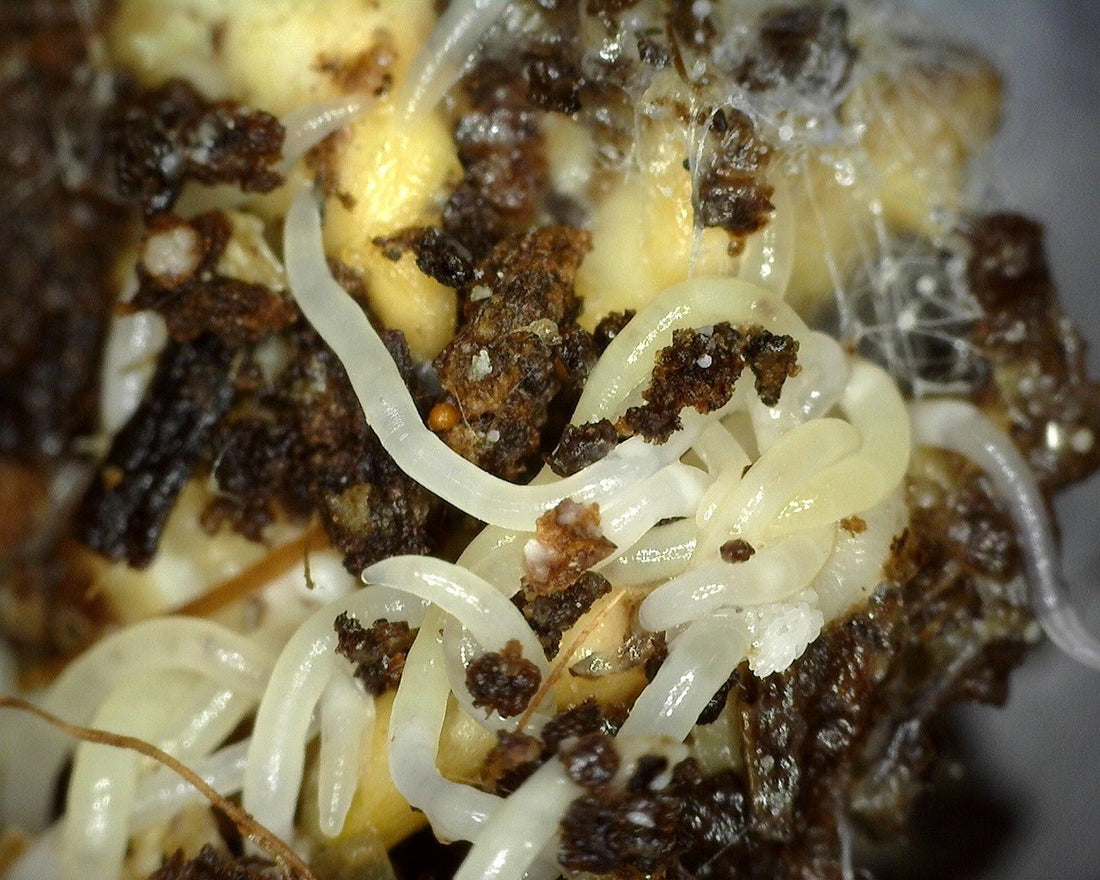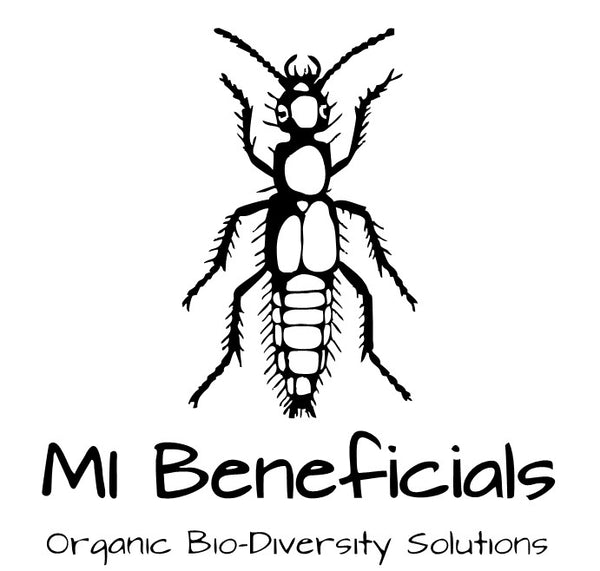
Enchytraeidae (Pot Worms) in Living Soil
Mark AshworthShare
Enchytraeidae, also known as Pot Worms, are a beneficial soil organism that is similar anatomically to the earthworm. The nickname Pot Worm is derived from their common presence in soil inside of containers and pots.
Although they're common in pots and containers, they're also found in moist, temperate soils around the world, alongside earthworm species working as part of the soil food web.
The presence of Enchytraeidae is absolutely beneficial in a balanced soil-food web. When there is an over-population or an excessive amount in your containers, it can be an indication of acidic conditions. It can also be an indication of excess organic material in your container.
Identification:
Enchytraeidae (Pot Worms), that are found in our living soil containers, have a white to clear pigment and get to a maximum size of 20mm.

Although they are easy to spot with the naked eye, they can be mistaken for the larvae of other species of worms or the larvae of a fungus gnat. A fungus gnat larvae has a distinct black tip and doesn't grow as long in size.
Purpose:
Enchytraeidae (Pot Worms) have a very similar diet and digestive function to earthworms and decomposing worms. They secrete enzymes through their mucus, which helps to break down detritus and cycle nutrients. In addition, they feed upon fungal-hyphae and bacteria as well as the excrement of other, larger soil organisms. By doing so, they help to limit pathogenic bacteria and fungus and contribute to a healthy microbial soil balance.
A quote taken from Fundamentals of Soil Ecology
"Enchytraeids have been shown to have significant effects on organic matter dynamics in soil and on soil physical structure. Litter decomposition and nutrient mineralization are influenced primarily by interactions with soil microbial communities. Enchytraeid feeding on fungi and bacteria can increase microbial metabolic activity and turnover, accelerate release of nutrients from microbial biomass, and change species composition of the microbial community through selective grazing"
In addition to helping with decomposition, nutrient cycling and balancing microbes (fungal and bacterial) in the soil, Enchytraeidae (Pot Worms) also help significantly with soil aeration. By moving up and down through the rhizosphere and below, Pot worms provide improved soil porosity and aeration.
Habits:
Enchytraeidae (Pot Worms) are often observed in close proximity to earthworms and red wigglers as they feed on similar (but smaller) detritus to them. Roughly 90% of their population will be found in the upper layers of a no-till or indoor living soil garden because they will go and follow where the organic matter is.
The perfect diet for both your plants and Enchytraeidae (Pot Worms) does exist... it's called Beneboost and it's 100% organic and has tons of plant and beneficial soil insect benefits. Check it out here!
Life Cycle:
Enchytraeidae (Pot Worms) contain both male and female reproductive parts (hermaphroditic) similar to the earthworm. They are hatched from cocoons and take roughly 65-120 days for full maturation depending on species and environmental conditions.
Looking to Add More Bio-Diversity to Your Soil? Checkout our Living Soil Bio-Diversity packs which come loaded with Rove Beetles, Hypoapsis miles and other decomposing species to get your living soil bed kicked off right.
Read More About These Key Soil-Based Beneficial Insects
- Oribatid Mites (Oribatida)
- Rove Beetles (Dalotia coriaria)
- Stratiolaelaps scimitus (Hypoaspis miles)
- Springtails (Collembola)
- Red Wiggler Worms (Eisenia Fetida)
- Enchytraeidae (Pot Worms)
